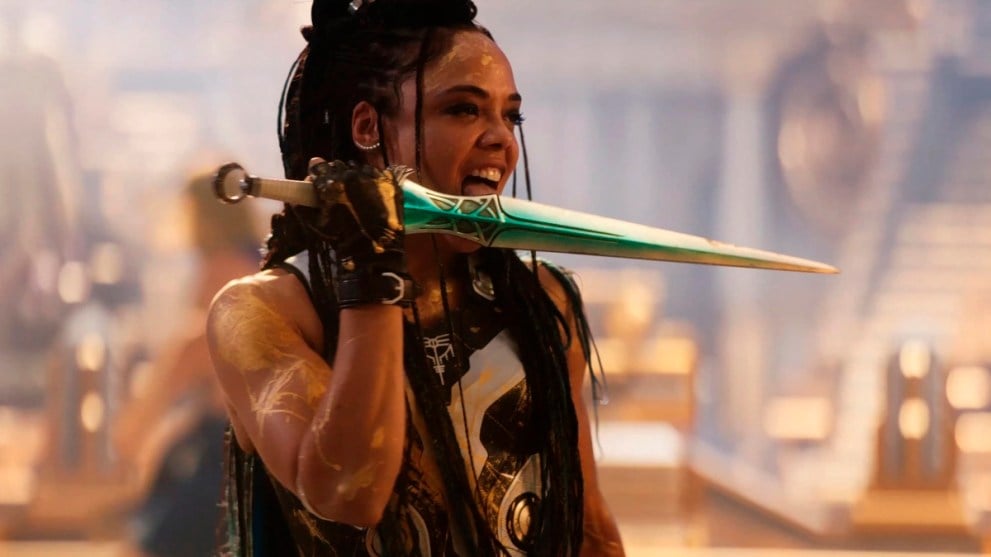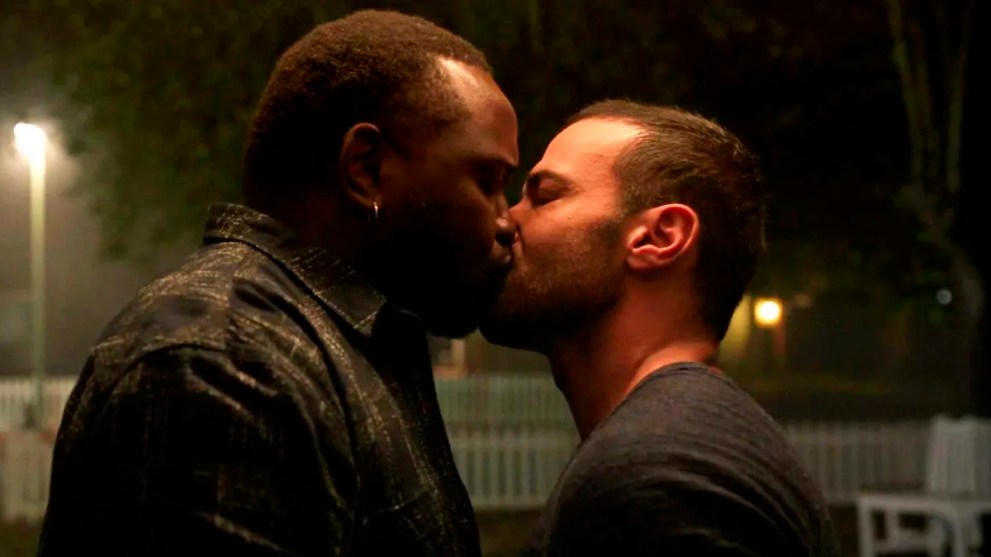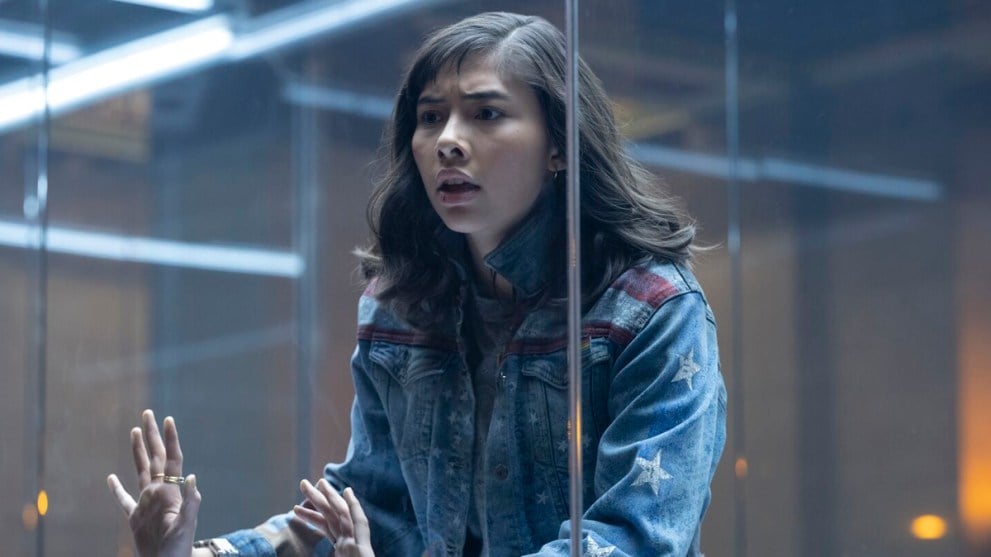It’s no secret that the Marvel Cinematic Universe (MCU) is not the boldest franchise when it comes to jumping on the diversity train. While it’s true that gender and race-wise things have gotten progressively more inclusive, when it comes to sexuality, it gets trickier. It took them 22 movies to introduce their first gay character, a nameless man, a cameo by Joe Russo.
While progress has been made during Phase Four with some additions to the queer community, these are not without controversy. With more and more MCU movies and shows coming out every year, it’s not surprising that the LGBTQ audience wants the studio to be held accountable and to provide meaningful representation.
After the nameless grieving gay man (Joe Russo) in Avengers: Endgame, there were still some attempts to bring secondary characters, mostly to the small screen, and drop their queerness in blink-and-you’ll-miss-it moments. From a cop in Hawkeye to Nikki and Mr. Immortal in She-Hulk, these characters’ sexuality is confirmed never through a visible and explicit action but always through one sentence.
In Nikki’s (Ginger Gonzaga) case, while she’s helping Jen set up a dating app profile, she comments that “hetero life is grim” as she goes through the choices of men on the app. So, this is not even explicitly saying she is queer, it only leaves the fans speculating. Gonzaga confirmed that Nikki is part of the LGBTQ community, and she has “a secret crush on Mallory”. Yet again, it seems that the MCU is taking the easy way out and doing the bare minimum. All speculations, no concrete proofs on screen.
If we take a look at the big screen in hopes to find some secondary queer characters, we find some fleeting mentions like America’s moms in Doctor Strange and The Multiverse of Madness who share a brief scene that leaves no doubt that they are together, even if they don’t really talk to each other. And we also find the loving story of Korg which comes from a queer planet where two males come together over a volcano and, by holding hands, conceive a baby. At the end of Thor: Love and Thunder, Korg even finds love and has a baby with Dwayne. While this in itself is great for the LGBTQ community, it’s not enough in a movie that promised more.

It would be impossible to address this question without mentioning Valkyrie (Tessa Thompson), which has been at the center of controversy and queerbaiting accusations. Besides being canonically bisexual in the comics, both Thompson and Taika Waititi (director of Thor: Ragnarok and Thor: Love and Thunder) have been vocal about the character’s bisexuality. However, how has this been translated on screen? With a deleted scene in Ragnarok and with a short observation done by Korg during Love and Thunder.
While it’s true that Korg confirms that Valkyrie lost her girlfriend in battle, it still remains to be seen whether the character is actually looking for her queen. The argument that confirming Valkyrie’s queerness would distract from the plot is nothing but a misnomer as it has never been a problem for Marvel to do small but explicit nods at heterosexual couples. So yes, we got Korg’s happily ever after, but no concrete hint at Valkyrie’s.
And because one controversy never comes alone, in 2018 there was yet another deleted scene that confirmed a new LGBTQ character. Ayo (Florence Kasumba) from Black Panther was supposed to be seen doing nothing more than flirting with a female general. Yet, that didn’t make the cut. Do you know what did? In 2022, during Black Panther: Wakanda Forever, Ayo is seen bantering with the new Dora Milaje warrior Aneka (Michaela Coel). The couple shares an embrace and Aneka kisses Ayo’s forehead at the end of the movie to which she replies, “Thank you, my love.” During the rest of the film, there are little to no indications of them being a couple. It’s rather curious that a nation led by powerful women with an all-female army has but one lesbian couple. We’re now talking about the most recent movie from the MCU, and it still leaves the LGBTQ community in the background.
Let’s now cross the border to the lead characters, because let’s be real: representation is only truly meaningful if displayed in places that hold power. Loki (Tom Hiddleston) is the first openly queer MCU lead character and he has long been canonically bisexual and genderfluid in the comics. However, we only hear about it in his show, in 2021, in a conversation he has with Sylvie, his female variant. While that conversation leaves no doubt that he’s queer, it will be interesting to see if Marvel will dare to lend screen time to show that through actions in the future. Show us, don’t tell us! After all, he is a beloved and extremely famous character so it would mean a lot if they went ahead and showcased his love life.

Interestingly enough, it was also in 2021 that the MCU debuted its first openly gay superhero, on the big screen, with Phastos in Eternals. This time, it’s more than a subtle nod and probably the most substantial LGBTQ representation in the universe so far. Even though Phastos shares the spotlight with the other Eternals, he gets to have the first same-sex family in the MCU with his husband and son and also share the first gay kiss on screen. It only took 13 years. While his husband doesn’t get much screen time, the whole arc is very authentic and emotional, as it’s thanks to Ben’s love that Phastos restores his faith in humanity.
While Valkyrie and Ayo have been wronged and we still don’t know if we’ll get to see more regarding Loki’s sexuality, stories like Korg’s and Phastos’ are positive signs of the times.
With Deadpool 3 joining the MCU, we might get to see more of Yukio and Negasonic Teenage Warhead and even a display of Deadpool’s canonically pansexuality. If there’s a character that shouldn’t be afraid to display who they are, that’s Deadpool! And seeing how popular the character is, it would mean a lot. Moreover, after Daredevil’s appearance in Spider-Man: No Way Home, other characters could reappear such as Jeri Hogarth, which is openly lesbian and has had many relationships throughout the Netflix shows.

Even though the MCU has failed the LGBTQ community countless times as money speaks louder and getting movies banned from certain countries certainly affects their wallet, they still have many opportunities to meaningfully improve with the potential establishment of the young avengers. They have already started laying the ground for America’s queerness in Doctor Strange in the Multiverse by having her wear an LGBTQ pin. Although this is surely a small step, in a movie full of plots and chaos, it surely is something. If they invest in the character, she could join Phastos and be the first lesbian superhero, as she is in the comics.
If only she could have her own solo movie with a love interest as many other white heterosexual male superheroes got, it would be a big step in the right direction. On top of that, if just like in the comics, the MCU develops Billy and Tommy’s sexualities, we’ll get to see Billy as Wiccan marrying Hulkling and Tommy as Speed being openly bisexual. This would certainly be a completely different group, in a good way, when compared to the Avengers. And, just like that, Marvel has all the cards it needs to provide meaningful LGBTQ representation in the future, let’s see if they know how to play them.
